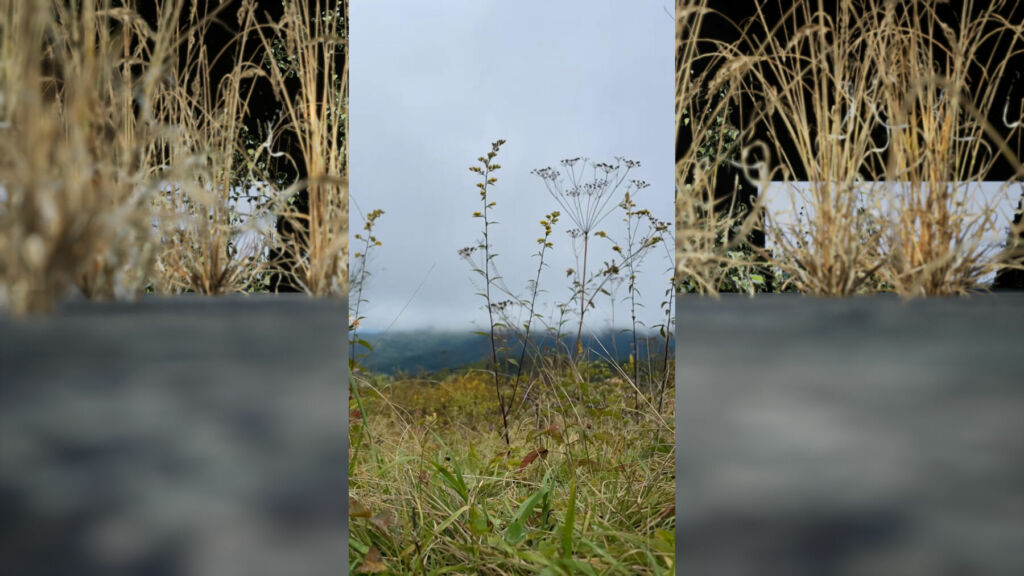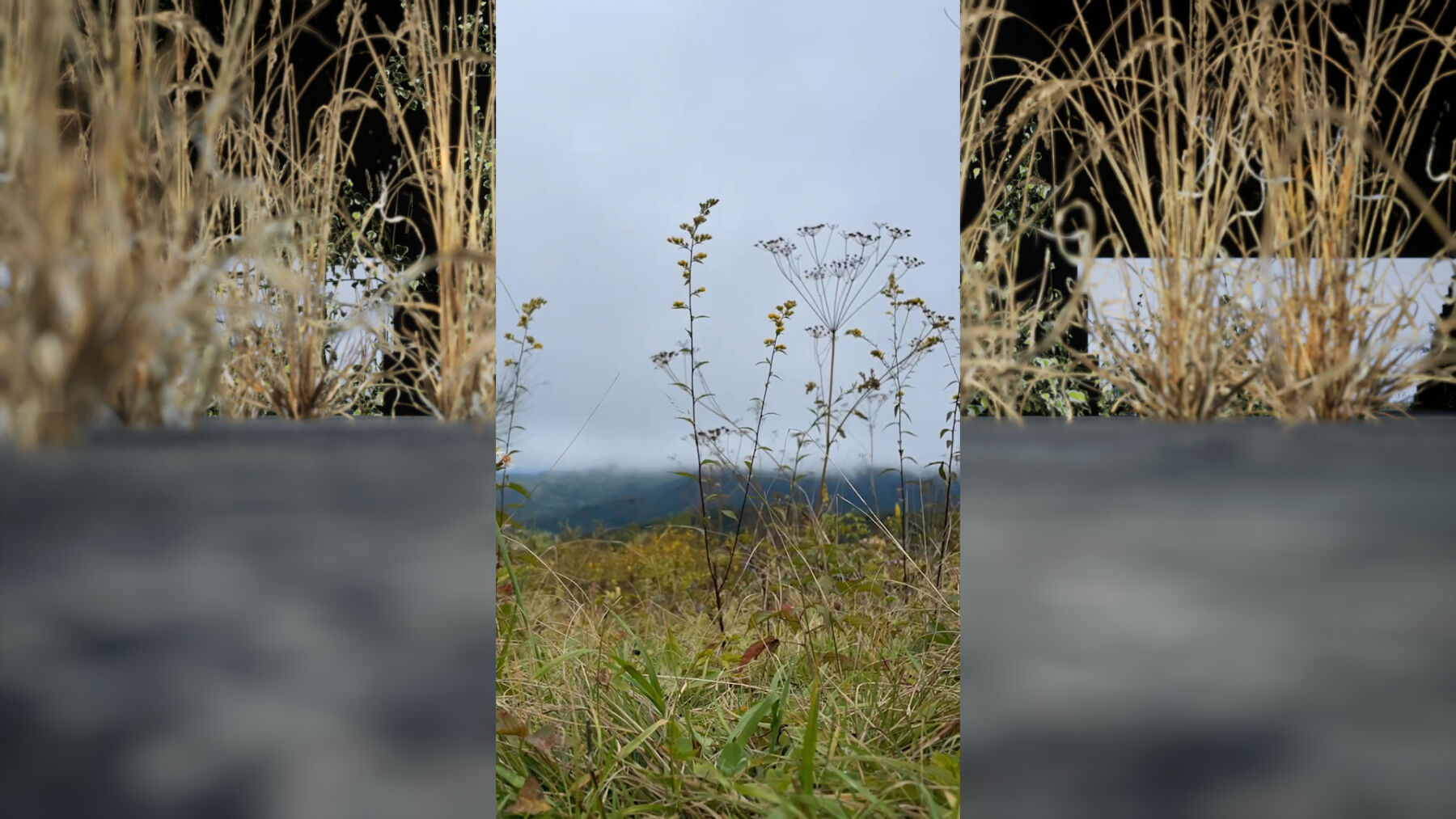Interview by Christopher Michael

Speaking on their extensive multimedia practice, Vivienne Griffin states anti-disciplinary approaches are urgent, especially when it comes to global problems. In this vein, Griffin is most comfortably categorised as an anti-disciplinary artist who works between media and methodologies, blending scientific and technological methods with artistic production. Through deconstructing traditional approaches to ‘multimedia’ art, Griffin has built a unique body of work in their wide-spanning career, working (often simultaneously) between sound, sculpture, drawings and 3D visuals.
While their background is primarily in fine arts, sonic practices and experimental approaches to sound often take centre stage in their work. As a PhD candidate at the renowned Sonic Arts Research Centre in Belfast, they have recently shifted their practice from traditional fine art towards a music-oriented approach. From early in their career, they have investigated the ubiquitousness of sonic practices in sculpture, video, and performance, challenging conventional notions of sound in contemporary art. Currently, they are exploring the human voice as a technology in and of itself and as a way to understand the digital.
Griffin’s unique approach towards technology investigates and unravels the binaries that exist between humans and machines. Their recent film M E R C Y, which premiered at this year’s transmediale, is a good example. Collaborating with the academic Cari Hyde-Vaamonde, whose research considers the implication of AI and algorithms within judicial systems, Griffin explores the disappearance of the human touch within systems like law and politics more generally. As they explain, if you are dealing with a human being, a judge… you have a chance to tell your story, the potential for mercy is removed with an algorithm.
The work takes place in two parts: the first is a text-based video work that allegorises a collective unconscious nervous breakdown and features a folk song turned to noise through a generative algorithm. The second part visualises Hyde-Vaamonde’s ideas using visual metaphors in a virtual world which Griffin created specifically for the film. The resulting film asks viewers to engage with complicated relationships between human intelligence, the ubiquitousness of algorithms, and the implications of anthropomorphizing AI technologies.
In M E R C Y, as in their practice more generally, Vivienne Griffin examines new technologies through an innately human lens. Griffin describes themselves as someone who loves and uses technology, and their work seeks to get away from binary ideas of technology being inherently good or bad to find the larger truth in our digital tools.
Much of their practice seeks to dispel notions of binary thinking on a larger scale so that we may think more critically about the world around us. Moving between 3D renderings, video, music, and sonic practices, Griffin’s antidisciplinary work allows audiences to engage in nuanced and urgent conversations so we may interact with the world around us in more imaginative ways.
Can you tell us about your general practice and research interests?
My background is in fine art. In the past, I’ve worked with video, sculpture, drawing, 3D visuals and sound. I switched disciplines from fine art to music during my PhD, which was really enriching. I still work in an art context with sound. I like to change media a lot – one constant is that I simultaneously work with new media and old technology.
For example, I might use 3D software alongside stone carving and switch between the two. At the moment, I’m thinking about the human voice as a technology. I’m interested in live processed vocals as a way to understand our relationship with the digital.
Your work takes many forms — sculpture, video, digital renderings — but sound is particularly important throughout your practice. What is your relationship to working in the sonic arts?
When I was a teenager, I tried to get into a classical music academy in Dublin. I had no musical training and didn’t know what I was applying to – I just knew I wanted to be around sound and music. My prior experience had been using a tape recorder to record my voice, speaking, singing and recording sounds. They called me for an interview and asked me to play something. When I said I couldn’t, then they asked me to sing something. I was totally unprepared – I thought they should let me in if I just wanted to be there. I had wanted a violin as a kid, but we couldn’t afford it, and I didn’t know anyone who was taking private music lessons.
Needless to say, I didn’t get in, and it turned me off trying to access these spaces, which felt elitist. So when I started working with art, sound was always a feature. For my first sound work, I took the last notes from some famous piano solo works and made a sound work in a room called last notes. I also filled latex speaker cones with water, playing sound through them to make patterns. Early on I was interested in the physical properties of sound and sound in installations. I’ve always worked with multiple things at once.
Sound is ubiquitous; video, performance, drawings of sound systems, text, spoken word, in the making of a static object, and I don’t see it as this self-contained thing. It bounces off walls, and we all hear differently. It’s endlessly explorable through experimental music, sonic acts, and performances; the list is endless. We often think of technology as screen-based and image-based. I’m interested in its sonic implications.
You showed a new film, M E R C Y, during the transmediale festival in Berlin. Can you tell us a little about that film and your creation process?
This long process began with R & D funding from Somerset House and King’s College London. Artists were invited to collaborate with researchers at King’s. I approached someone from the law department who is researching the introduction of algorithms into the judicial system, Cari Hyde-Vaamonde. Hearing about her work and research involving a truly interdisciplinary approach has been super interesting. I also use the term anti-disciplinary.
People often consider inter/trans/multi-disciplinary, but anti-disciplinary approaches are urgent, especially regarding global problems. In Cari’s research, she’s looking at how policy lawmakers introduce algorithms into the judicial system.
There is no transparency around data, policymakers are not programmers, and judges are not computer scientists. When this might influence the outcome of a case, it’s frightening. Within ‘M E R C Y’, we discussed how if you are dealing with a human being, a judge (although, of course, they can also be biased), you have a chance to tell your story, and the potential for mercy is removed with an algorithm.
The dialogue is less focused on any idea that technology is bad and people are good because that is obviously not the case. It’s about transparency and ethical judgements on what is used, how it’s used and most importantly, where the data came from that it was trained on. I was working from the perspective of someone who loves and uses technology, like software for music and 3D visuals.
Still, I didn’t understand algorithms in something like Cari’s research. I wanted to create visual metaphors within a 3D environment from algorithmic systems and other metaphors within Cari’s research. I also looked at early chatbots and the Eliza effect – which describes the anthropisation of chatbots.
Ultimately, ‘M E R C Y’ is a video work in two parts. The first section is a text-based video work allegorizing a collective unconscious nervous breakdown. For the sound, a melancholy folk song accompanied by guitar was put through a generative algorithm, turning it to noise. The black-and-white text video consists of multiple voices.
One voice describes the potential smell of a digital rose, another voice recounts a 10-second video they viewed, and yet another is an internal monologue on speed. Part two used visual metaphors in a virtual world to describe complex systems in Cari’s research.
For example – the maze describes black box AI, and the rubbish in the maze refers to dirty datasets. The stairways within Mercy refer to decision tree branching algorithms. Mercy takes on the problem of explaining complex systems to the general public.
Through this work, I explored the idea sound of the despotic binary. The despotic binary refers to the binary on/off, yes/no, 0/1, which somehow explains the polarization of politics and the online echo chambers. Within the sound, the text and the virtual world, there is also a search for the emancipatory prompts within the machine and human interaction.
In ‘M E R C Y’, language plays an important role, as it does in many of your other works. You have a tendency to remix and play around with language and text. What draws you to using language in such a unique way?
I like working with fragmented language because I’m dyslexic. Coming from Ireland, I had a relationship with the Irish language where I only understood words here and there. Somehow language took on material properties other than on the page or spoken. The black matter of the ink on the page and the physicality of the forms fed into my sculptures.
As a decolonial move, I like to embrace misspelt words, bad grammar and broken English. I also curse a lot, and I think cursing is cultural. No one notices it in certain contexts, but when I first came to the UK at 18, I realised that it didn’t travel that well and that cursing also had to do with class. It’s something I’m so aware of all the time, England is the most class-based society I’ve lived in, and there is no way around that. In the States, with all its problems, I didn’t encounter the glass ceiling of class when I lived in New York.
What is more important: taking or not taking yourself too seriously to be creative?
I need both – I need not take myself too seriously so that I don’t over-edit ideas, especially when they are in the early stages. Also, to be allowed to fail and make mistakes in public, I need a light touch with that. I need to believe in what I’m doing – this can be a very abstract thing, that it is inherently important as an activity, but I’m not always sure why.
Also, surviving financially as a full-time artist is tricky if you are not independently wealthy. It takes some serious work. What does it even mean to take yourself seriously, to get out of bed and be motivated to make work? Sometimes without any idea how it will turn out or be received, there’s a lot of letting go of outcomes.
Solitude or loneliness, how do you spend your time alone?
I love alone time and solitude, I live with my partner Jasmine and two dogs, and before that, I lived with my son, so I’ve had to seek out solitude. Sometimes I go away and stare at the sea for a couple of weeks alone. That always works. I guess I spend a lot of time in my studio alone. I crave residences in remote places regularly, but I also love people, so it’s a balance between not isolating and getting space and time.






